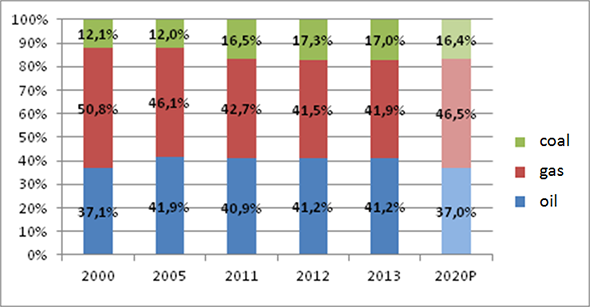Role of Oil in Fuel Balance
27.04.2014
According to forecasts of ExxonMobil, by 2040 demand for oil in developing countries will increase by 65%. Thanks to integration of energy-saving technologies the use of energy resources by this time will increase by 35%. World GDP will grow more than twice. The increase in electric power consumption will be associated with the growth in the population number by almost a quarter — to 9 billion people — and growth in prosperity.
Oil will still lead in the structure of energy resources; however, role of oil produced from unconventional sources such as deep seabed, low-permeability reservoirs and oil sands will increase. Demand for this kind of fuel will increase approximately by a quarter.
In Russia in 2013 they started to develop new oil fields (Prirazlomnoye oil field, Kirinskoye gas-condensate field), while the oil production volume amounted to 523.2 million tons, which let Russia share the leading positions in oil production with Saudi Arabia. At the end of the year they started to develop Trebs and Titov oil fields, commercial development of which is scheduled for 2016. Economically recoverable oil reserves in 2013 increased up to more than 20 billion tons. In 2014 it is planned to commence developing Filanovsky oil/gas-condensate field.
By 2020 oil production volume will increase only by 0.8 million tons. An increasingly higher growth will be observed in gas and coal production.
Changes in natural fuel production structure by kinds have been observed for a long period of time. As early as 2000 the dominant share in the structure belonged to natural gas, which amounted to 51% of the total volume. The share of oil was 37%. In further years the share of gas decreased. This process was accompanied by growth of coal and oil shares. In 2011–2013 the share of oil amounted to about 41%.
By 2020 the greatest share in the structure of Russian production will belong to natural gas, it will amount to 47%, while the share of oil will decrease by 4.2 percentage points — to 37%. Thus, the situation will be different from the world one, where oil is leading in the structure.
Figure 1. Changes in the oil share in the structure of production of main energy resources in 2000–2013, %

Source: Federal State Statistics Service, Ministry of Energy of RF
For more information please see “Market of Oil and Oil Products: Comprehensive Analysis and Forecast till 2016” by Intesco Research Group.
Materials of ExxonMobil and Ministry of Energy of RF were used in the article.

